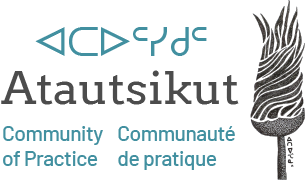Dans cette présentation, nous abordons le deuil chez les enfants et les adolescents et comment nous pouvons soutenir les familles dans ce processus. Nous discuterons de la pluralité des façons de vivre le deuil, des types de deuils, des réactions des jeunes face à la perte et des pistes d’intervention concrètes afin de les soutenir dans ces moments difficiles.
Il s’agit d’un sujet difficile qui peut vous ramener à vos propres expériences de deuils. Cela peut être d’autant plus vrai si vous consultez les documents autour de ce thème en dehors des activités en petit groupe de la CdP, durant lesquelles il est possible de recevoir du soutien de la part des autres membres. N’hésitez pas à prendre un moment de repos, à en discuter avec quelqu’un, ou à communiquer avec nous au besoin.
Ressources des rencontres Atautsikut
Références
- American Psychological Association (APA) (2012, January 1). How to recognize and deal with anger. http://www.apa.org/topics/recognize-anger
- Archibald, L., Dewar, J., Reid, C., & Stevens, V. (2012). Dancing, singing, painting, and speaking the healing story: Healing through creative arts. Aboriginal Healing Foundation.
- Archibald, L. (2006). Final Report of the Aboriginal Healing Foundation, Volume III: Promising Healing Practices in Aboriginal Communities. Ottawa, ON: Aboriginal Healing Foundation.healing story: Healing through creative arts. Aboriginal Healing Foundation.
- Bonanno, G.A. (2004) Loss, Trauma, and Human Resilience: Have We Underestimated the Human Capacity to Thrive After Extremely Aversive Events? American Psychologist, 59: 20-28
- Castellano, M. Brant (2010). Healing residential school trauma: The case for evidence-based policy and community-led programs. Native Social Work Journal 7:11–31.
- Castellano, M. Brant (2006). Final Report of the Aboriginal Healing Foundation, Volume I: A Healing Journey: Reclaiming Wellness. Ottawa, ON: Aboriginal Healing Foundation.
- Castellano, M. Brant, (2008). A holistic approach to reconciliation: Insights from research of the Aboriginal Healing Foundation. In M. Brant Castellano, L. Archibald, and M. DeGagne (eds.). From Truth to Reconciliation: Transforming the Legacy of Residential Schools. Ottawa, ON: Aboriginal Healing Foundation: 385–400.
- Hampton, M., Baydala, A., Bourassa, C., McKay-McNabb, K., Placsko, C., Goodwill, K., … & Boekelder, R. (2010). Completing the circle: Elders speak about end-of-life care with Aboriginal families in Canada. Journal of palliative care, 26(1), 6-14.
- Kirmayer, L., C. Simpson, and M. Cargo (2003). Healing traditions: Culture, community and mental health promotion with Canadian Aboriginal peoples. Australasian Psychology 11(Supplement): s15–s23.
- Spiwak et als, (2012). Complicated grief in Aboriginal populations. Brief report, Dialogue in Clinical Neuroscience, 14(2): 204-209.
- Wesley-Esquimaux, C. and M. Smolewski (2004). Historic Trauma and Aboriginal Healing. Ottawa, ON: Aboriginal Healing Foundation.ilies in Canada. Journal of palliative care, 26(1), 6-14.
- Bonanno, G. A., & Kaltman, S. (2001). The varieties of grief experience. Clinical psychology review, 21(5), 705-734..
- Briggs, J. L. (1970). Never in Anger: Portrait of an Eskimo Family. Cambridge, MA: Harvard University Press
- Van der Kolk, B. A., & McFarlane, A. C. (Eds.). (1996). Traumatic stress: The effects of overwhelming experience on mind, body, and society. Guilford Press.
- Herman, J. (1997). Trauma and Recovery: The Aftermath of Violence—From Domestic Abuse to Political Terror. (First published 1992.) New York, NY: Basic Books.
- Jérôme, L., Biroté, C., & Coocoo, J. (2018). Images de la mort et ritualisation du deuil sur les réseaux socionumériques: des usages de Facebook en contexte autochtone. Frontières, 29(2 Kelly L, Minty A (2007). End-of-life issues for Aboriginal patients: a literature review. Can Fam Physician.; 53(9): 1459-1465.
- Kellehear A. (2000). Spirituality and palliative care: a model of needs. Palliat Med, 14(2): 149-155
- Kubler-Ross, E. (1969). On Death and Dying,, Macmillan: London.
- Kübler-Ross, E., & Kessler, D. (2005). On grief and grieving: Finding the meaning of grief through the five stages of loss. Simon and Schuster.





